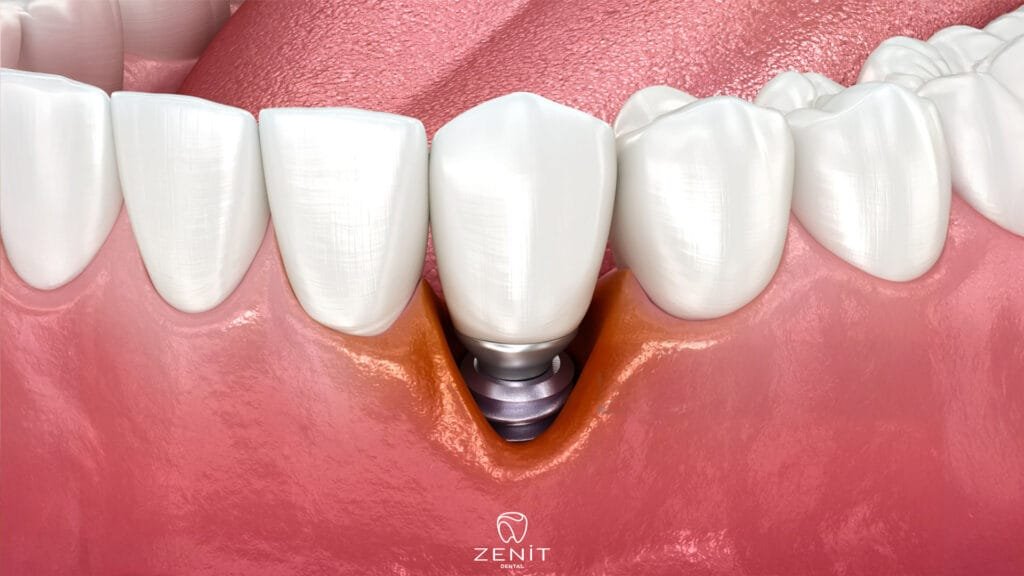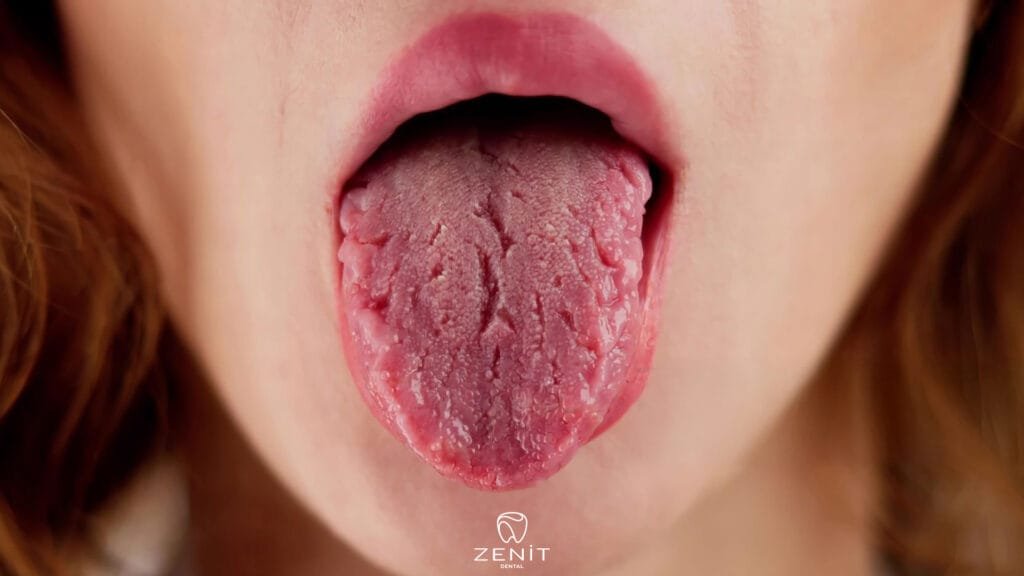What is Periimplantitis?
Dental implants have become one of the most preferred treatments in modern dentistry today, offering a permanent, healthy, and aesthetic solution for replacing missing teeth. They are considered an ideal option for many people because they restore chewing function, closely resemble natural teeth, and are long-lasting. However, despite these advantages, implant treatment also carries some risks that should be considered.
Just as gum disease can occur in natural teeth, infection can also develop around implants. This is where periimplantitis arises. Periimplantitis is a serious condition characterized by inflammation and bone loss in the tissues surrounding the implant. Unfortunately, if not detected and treated early, it can lead to implant failure or even complete implant loss.
What is Periimplantitis?
Periimplantitis, in its simplest form, is an inflammatory condition that occurs in the gums and jawbone surrounding an implant. In fact, this condition can be compared to periodontitis (advanced gum disease) seen in natural teeth. Just as inflammation that begins in the gums spreads to the bone surrounding the tooth if left untreated, a similar process occurs around the implant.
In the initial stages of the disease, symptoms such as redness, swelling, and bleeding when brushing or eating can occur in the soft tissues around the implant. At this stage, most people overlook this and consider it simple gum sensitivity. However, if the problem persists unnoticed, the inflammation can spread to the bone supporting the implant. The loss of the jawbone weakens the implant’s anchoring base.
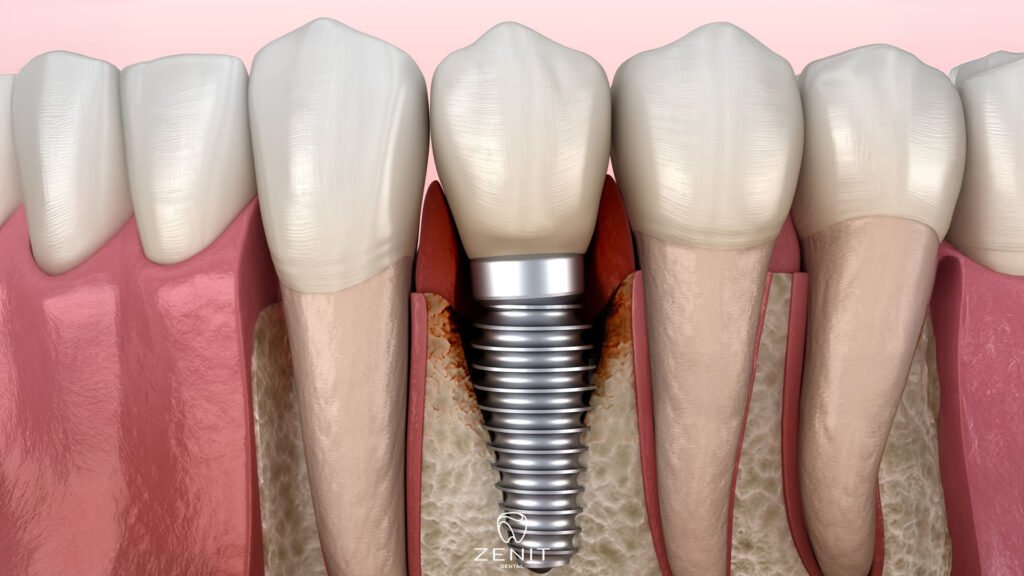
Unfortunately, as periimplantitis progresses, it not only causes symptoms such as pain, foul odor, or bleeding, but can also lead to loosening or even complete loss of the implant. This can be a difficult situation for the individual, both financially and emotionally.
The Difference Between Periimplantitis and Mucositis
One of the most significant problems encountered after implant treatment is inflammation. However, there’s a distinction to be made: periimplant mucositis and periimplantitis should not be confused. While they present with similar symptoms, their severity and treatment processes differ.
Periimplant mucositis is an early-stage inflammation affecting only the gums around the implant. It typically manifests as gum redness, mild swelling, and bleeding during brushing. The good news is that this condition is completely reversible with proper care, regular oral hygiene, and professional cleanings. This means that if detected early, it doesn’t pose a significant threat to the implant’s longevity.
In contrast, periimplantitis is a much more advanced condition. At this stage, not only the gums but also the bone tissue surrounding the implant have begun to be affected. As the jawbone resorbs, the foundation to which the implant is attached weakens, making treatment both more difficult and potentially irreversible.
Therefore, people with implants should not dismiss the symptoms by saying, “A little bleeding is normal” or “It’s temporary tenderness.” Consulting a dentist, even with the slightest suspicion, can help detect inflammation in the mucositis stage. While mucositis can be controlled with a simple intervention, peri-implantitis may require more extensive treatment, even leading to implant loss.
Periimplantitis Symptoms
Periimplantitis is usually a slowly and insidiously progressing condition, so it may not initially cause obvious symptoms. However, with careful attention, it’s possible to detect it early with some minor signs. These symptoms include redness and swelling of the gums around the implant, bleeding while brushing or spontaneously, a bad taste or odor in the mouth, and sensitivity or pain around the implant.
Over time, gum recession may occur, and the implant’s stability may begin to deteriorate, potentially even leading to movement. If you experience one or more of these symptoms, it’s crucial to consult a dentist immediately for the health of your implant.
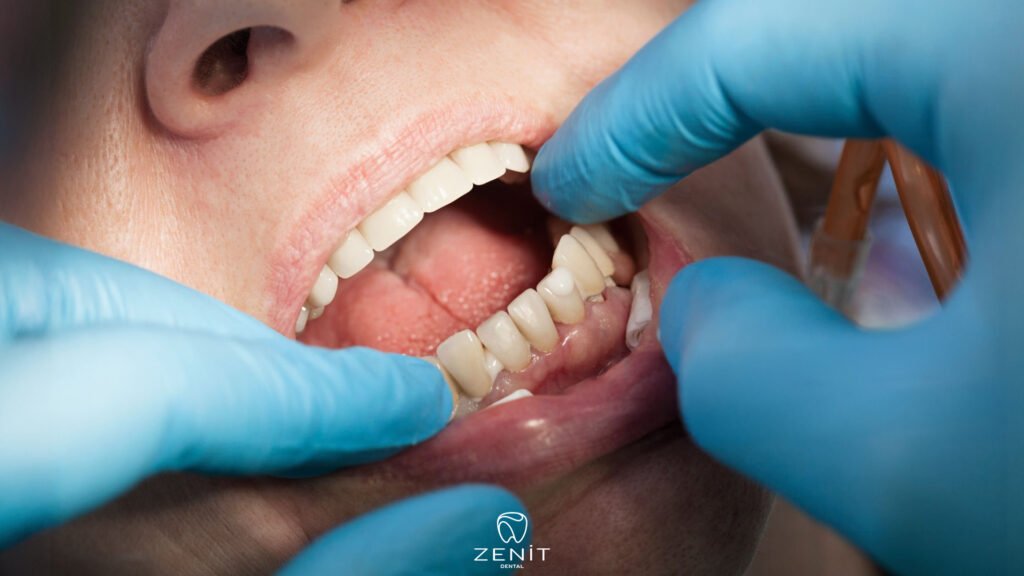
What Causes Periimplantitis?
There’s actually no single cause for periimplantitis; it usually develops from a combination of factors. The most common causes can be summarized as follows:
Poor oral hygiene: Bacterial plaque accumulated around implants causes inflammation, just as it does with natural teeth. This risk increases exponentially when regular brushing, flossing, and interdental brush use are neglected.
Smoking: Smoking not only impairs gum health but also slows the healing process. Therefore, smokers are at a much higher risk of implant loss and periimplantitis.
Skipping regular checkups: Skipping regular dental checkups after implant treatment can lead to minor problems escalating unnoticed. However, early diagnosis often makes treatment much easier.
Diabetes and systemic diseases: Diseases that weaken the immune system, especially uncontrolled diabetes, reduce the defenses of the tissues around the implant and increase the risk of infection.
Improper implant placement: Improperly angulating the implant, excessive chewing load, or poor alignment with the bone can also predispose to peri-implantitis.
Trauma and excessive load: Excessive chewing forces or trauma to the jawbone can also cause tissue damage and trigger inflammation.
How is Periimplantitis Diagnosed?
The dentist examines the tissues surrounding the implant through a clinical examination. Radiographic imaging is also used to check for bone loss. If inflammation, bleeding, and bone loss are observed around the implant, periimplantitis is diagnosed.
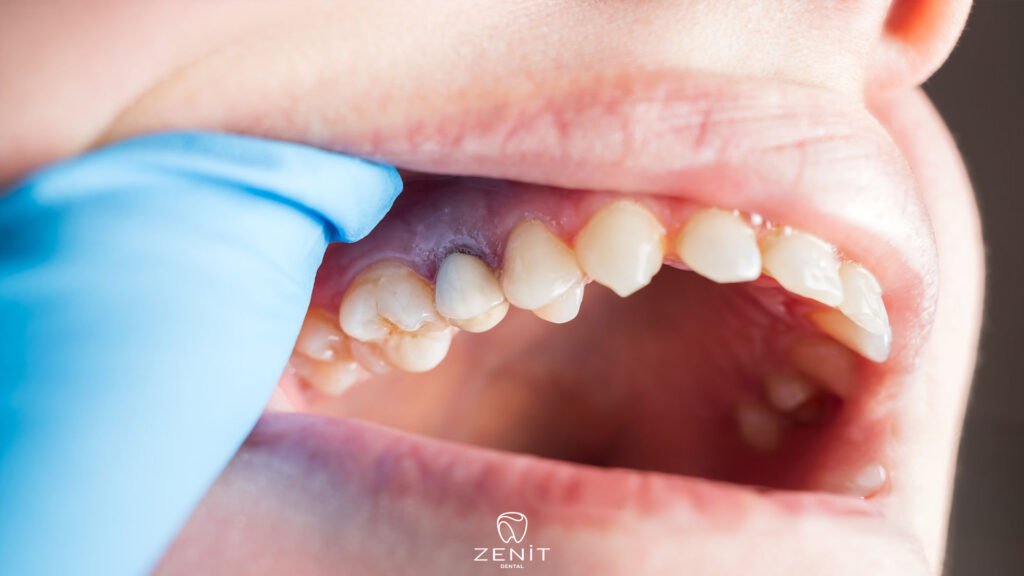
Periimplantitis Treatment
The primary goal of periimplantitis treatment is to stop the inflammation, eliminate bacteria, and protect the implant as much as possible. Treatment methods vary depending on the stage of the disease.
In the early stages, before the problem progresses, a professional cleaning removes bacterial plaque and tartar around the implant. Additionally, antibacterial mouthwashes and special disinfection procedures are used to prevent further inflammation. Regular maintenance and checkups at this stage allow most implants to be maintained in good health.
In more advanced cases, more extensive treatments are required. Surgery is used to remove the inflamed tissue surrounding the implant, and bone grafting can be performed if there is any bone loss. More modern methods such as laser and photodynamic therapy are also used to support this process. However, if the implant is severely damaged, removal may, unfortunately, be unavoidable in some cases.

